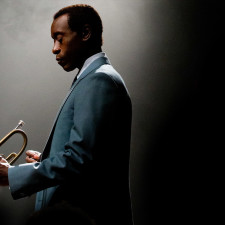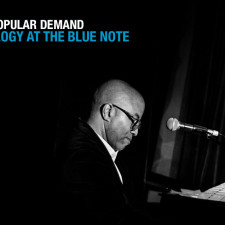Having been a student in Prof. Ramsey’s History of Jazz and American Music courses, I wanted to share my reflections on working for an independent record label over this past summer. While we often focus on the aural qualities or the cultural legacies of certain music, my internship experience opened my eyes to another key element: the business of music. While the economics, distribution, and marketing of music may not necessarily have the intellectual appeal of more academically oriented perspectives, these processes are absolutely crucial to the experience of listening to music. Consider how our perceptions of certain pieces of music would change depending on these aspects—if we never realized Sly and the Family Stone was a racially integrated band because we only heard their music in a film, if we missed out on the cover art of Bitches Brew because we bought it as an mp3 on iTunes.
My experience working for an independent record label was rather eye opening in these respects. Though a fairly small label, the company has impressive artists; readers who stay current with emerging, blog-lauded bands would recognize many of the label’s artists. Though it was great to help censor an unreleased music video from an artist on the label (and slightly less great to go to Starbucks and buy four soy iced café lattés for a group whose music I like), by far and away the best aspect of working for the label involved learning about its operations and structure.
This label is rather unique in that it had a variety of different departments: a record label, a publishing arm, and synchronization service that worked to get artists’ songs played in movies, commercials, and other media. One aspect that I found particularly interesting was the lack of overlap between these services. Having never thought critically about the music industry before, I naively assumed that the artists on the record label would also work with the publishing and synchronization divisions of the company. This was completely wrong. In fact, there is frequently very little overlap between the record label and the publishing division. A related insight was the perception of certain other labels’ catalogues or publishing rights to artists’ music as commodities to be bought and sold. I had never really considered this perspective before because of the abstract nature of publishing rights and simply out of ignorance. The label is also unique in that it had two label imprints and several joint venture partners and in that its records are distributed by a distribution group of a major record label.
So what did I actually do as an intern? I would be willing to wager that my experience was quite different from working at a major label, where I most likely would have been working in the mailroom. I wrote news clippings about our artists for publication on our website and new media channels. I also organized artist tour dates and listened to songs in order to “tag” them with descriptive characteristics for our synchronization division. However, the best experience was one undertaken on my own initiative; I helped revamp the company’s Facebook profile and Twitter feed. Surely, this experience was one that I could only have gotten at a smaller label.
To any readers looking to break into the music industry, keep these things in mind. Use your network to its fullest extent—you have useful contacts that you don’t even realize—and be prepared to do a lot of cold calling and e-mail to all sorts of labels. Sure, it takes a lot of initiative, but it’s worth it.
– Jonathan Williams
Tags: Bitches Brew, Guthrie Ramsey, history of jazz, Miles Davis, music internship, Sly and the Family Stone


 Share On Facebook
Share On Facebook Tweet It
Tweet It




![[VIDEO] Black Music and the Aesthetics of Protest](http://musiqology.com/blog/wp-content/uploads/2015/03/onlynchings1-225x225.jpg)






